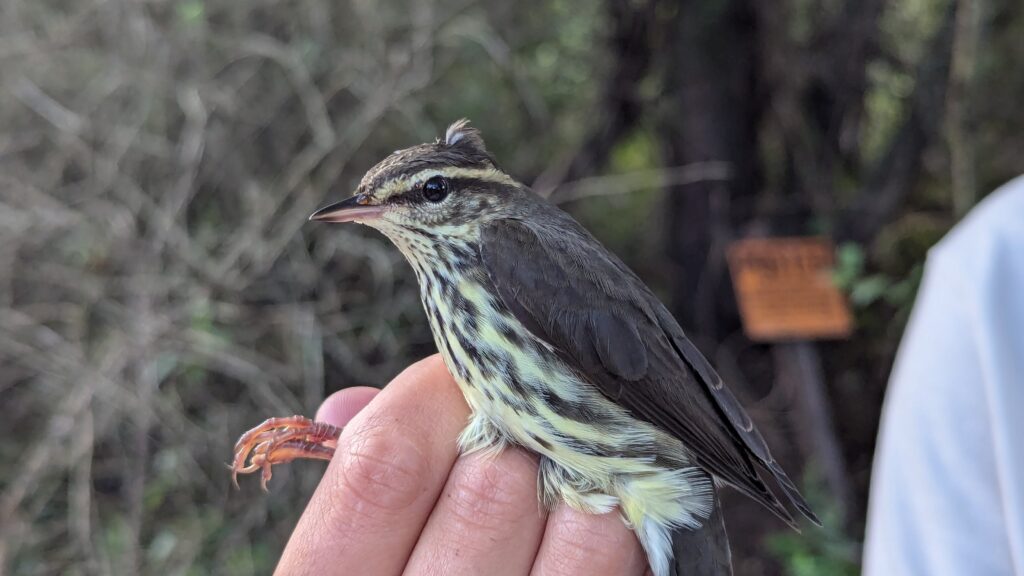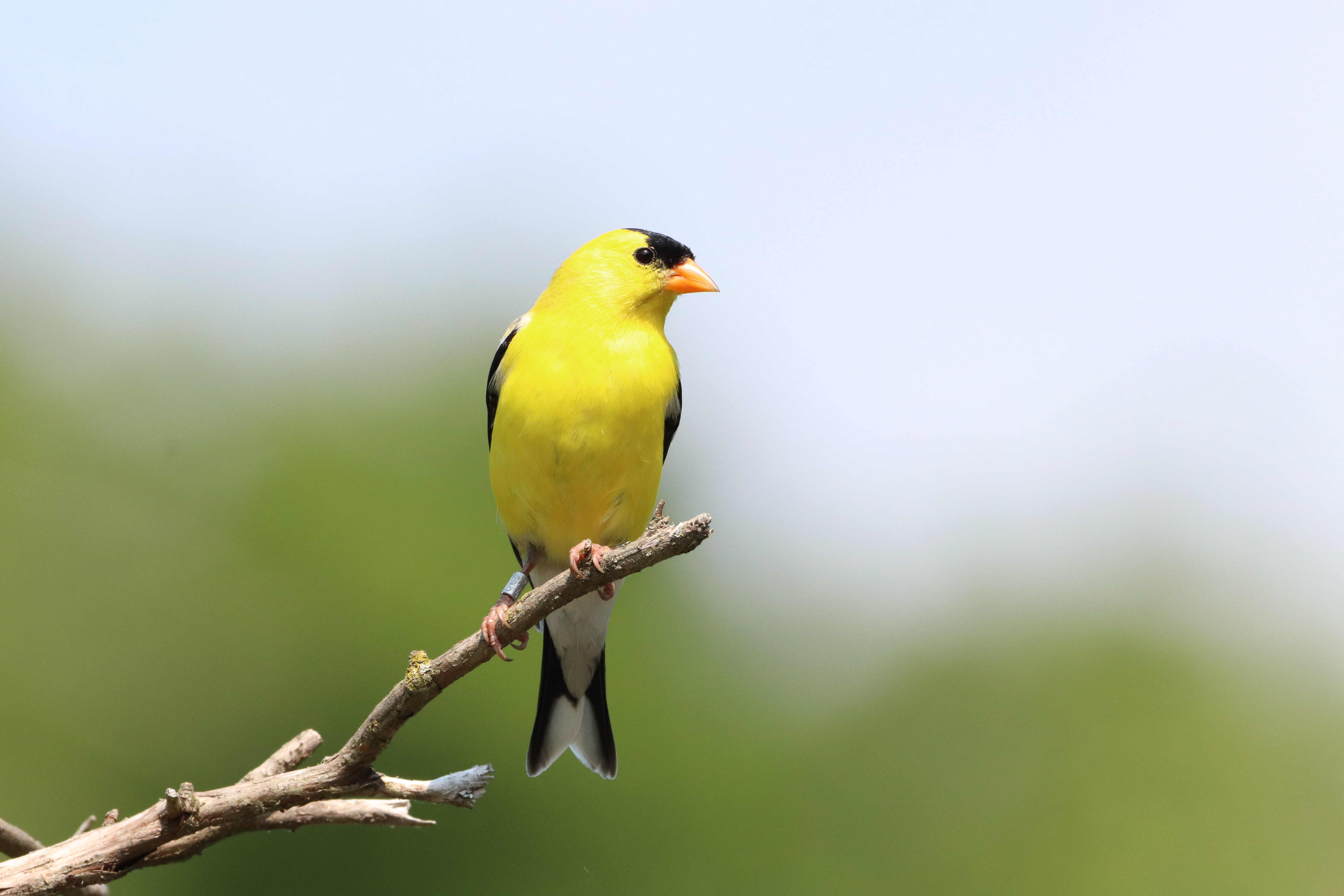Why AMGO is now AGOL, and what the hawk is going on?
August 10 2024
72° / 85° partly sunny
By Samantha Bean
You may have heard that changing a name is bad luck. Some are so steadfast in the belief, even a misspelled name on a registered horse (that was an inadvertent typo), the misspelling was never changed. This horse went on for his whole storied career with the name “American Pharoah” and is arguably one of the best horses of all time in the sport. Songbirds, shorebirds, hawks and falcons on the other hand, have seen many a change in their names. Not so sure about the shorebirds as my knowledge of them is slim.
But first, a step into the morning of August 10th, the last summer banding session with Wild Bird Research Group for the MAPS program. It was a welcome view to see stars in the sky. If not incredibly refreshing, it was the proverbial “blue hour” that made the sky’s color so unique and the stars’ presence seem otherworldly. I had been up long before the birds this morning as it was our last official songbird banding session of the summer season. By now, after so many mornings marked with a 4:10 alarm, it was practically second nature. But having seen nothing but gray skies and rain clouds for what seemed like a week, made the morning light all the more compelling.
Equally compelling was the crew that had been together all summer. It was a solid group of banding technicians and volunteers and at times we communicated not by voice but by knowing intuitively what needs to be done from set up to take down. But by the end of this particular morning, it did seem that our lack of words were due to a realization that the summer was ending, and just like that, the weeks had flown by hindered not by the humidity. It was an unbearably hot summer and while we were reticent to say goodbye, we were definitely lit up about the Fall season that brings not only cooler air, but owls.
Fall apparently is hinting at its entrance if the birds are any indication. A Northern Waterthrush was a high point to start the morning off before 7am. A new bird to the station, and most likely just passing through on its way down south for the winter (as our banding location is just shy of its breeding turf). And for the first time, we got to put NOWA on the data sheet. (Its assigned alpha banding code).


Followed by another bird that we had only encountered for the first time just last summer. A Worm-eating Warbler (WOWA) was certainly an exciting bird to welcome back to the station. (Pictured). For the remainder of the morning it was back-to-back birds. Never a dull moment and we were logging birds, measuring wings and tails, reading off band numbers, and studying molt patterns…with efficiency and ease.
Our data collection only once in a while interrupted with hilarious stories or discussions about birds. We also welcomed some friends and family to the station this day as well. Among our conversations, news about new IBL banding codes that we need to know erasing our knowledge of AMGO as the American Goldfinch because it is now AGOL. This will be our homework for sure until next season, because here we are, so used to writing AMGO in our banding logs. If you want to read more about why the banding code had to change for this darling little familiar bird, read on for extra credit. If EC isn’t your thing, I will see you in the next one. Fall is just around the corner.
Why AMGO is now AGOL, and what the hawk is going on?

The Northern Goshawk which was formally NOGO, is now split into the American Goshawk and the Eurasian Goshawk as mounting evidence what showing that across the continents, the species was not as similar as what was once thought, thus the 2 species. Which, following the 7 special rules of Alpha banding codes as defined by the Bird Banding Laboratory, the new codes would be AMGO and EUGO for the goshawks.
Hold up. AMGO was already in use for the American Goldfinch. So then what happens? Well, a first-order code like the AMGO which follows rule number 2 (of the 7) which states: If the English name consists of two words, use the first two letters of the first word, followed by the first two letters of the second word; e.g., Common Loon, COLO.”
HOWEVER…when a “conflict” arises as is the case here, when first-order codes are the same for two separate species, then what? This happened before by the way, for example with the Cedar Waxwing and Cerulean Warber, they both can’t be CEWA. So both need to receive second-order codes so there isn’t any confusion. (And the first-order code CEWA is not used at all). So the waxwing became CEDW and the warbler became CERW.
So AMGO is no longer for either bird nor hawk, and the American Goldfinch is AGOL and American Goshawk is AGOS.
Fun fact: The Yellow Warbler has gone down this road before, twice. YEWA changed to YWAR due to the addition of Yellow Wagtail (YWAG), and then when the name of the latter was changed to Eastern Yellow Wagtail (now EYWA) the Yellow Warbler went back to YEWA.
What an end to the season! Bird names can get a little cuckoo can’t they?
No responses yet